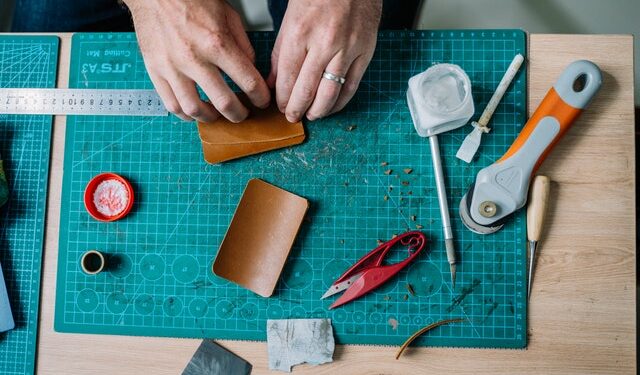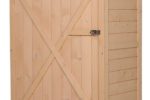How to cut angles on wood

There are a few ways to cut angles on wood. You can use a miter saw, a jigsaw, or a coping saw. In this article, we will discuss how to use each of these tools to cut accurate angles on wood. If you’re cutting angles on wood for a project, there are a few things you need to do to make sure the cuts are accurate. First, you’ll need to decide on the angle you want to cut. This will depend on the project you’re working on. Next, measure and mark the wood at that angle. Then, cut along the marked line with a saw. Be sure to sand down any rough edges before finishing the project with a sealant or paint.
Miter Saw
A miter saw is a power tool that is used to make precise cuts in wood. It can cut angles, curves, and straight lines. The blade of a miter saw is mounted on a pivoting arm that allows the blade to rotate. This enables the user to make angled cuts.
To use a miter saw, first, you need to determine the angle at which you want to make the cut. Then, you need to adjust the blade of the saw accordingly. Next, you need to hold the workpiece firmly against the fence of the saw and align it with the blade. Finally, you can start cutting by turning on the saw and moving it slowly through the wood.
Jigsaw
A jigsaw is a power tool that can be used to make both straight and curved cuts in wood. It has a thin, oscillating blade that moves up and down very rapidly. This makes it possible to cut curves as well as straight lines.
To use a jigsaw, first, you need to draw the line on the wood where you want to make the cut. Then, you need to clamp the workpiece securely to your work surface. Next, you need to select the correct blade for the type of material you are cutting. Finally, you can start cutting by moving the saw slowly along the line.
Coping Saw
A coping saw is a hand tool that is used to make intricate cuts in wood. It has a thin blade that is mounted on a U-shaped frame. The blade of a coping saw is held under tension, which makes it possible to make very tight turns.
To use a coping saw, first, you need to draw the line on the wood where you want to make the cut. Then, you need to clamp the workpiece securely to your work surface. Next, you need to hold the saw frame in one hand and the handle in the other. Finally, you can start cutting by moving the saw slowly along the line.
Decide on the angle you want to cut
There are a lot of ways that you can cut angles on wood, and it can be a little confusing to figure out which method is the best for the job you’re trying to do. In this article, we’ll discuss three different methods for cutting angles on wood, and we’ll give you some tips on how to choose the right one for the job.
The first method is to use a miter saw. A miter saw is a power tool that allows you to make precise cuts at any angle. If you need to cut angles that are less than 45 degrees, a miter saw is the best tool for the job.
The second method is to use a circular saw. A circular saw is a power tool that can also make precise cuts at any angle. However, if you need to cut angles that are greater than 45 degrees, a circular saw is the better choice.
The third method is to use a hand saw. A hand saw is not as precise as a miter saw or a circular saw, but it’s still possible to get good results if you use a steady hand and a sharp blade.
Measure and mark the wood at that angle
When it comes to woodworking, knowing how to cut angles is essential. Angles are necessary when creating joints and other pieces of furniture, and can be a challenge for beginners. With the right tools and techniques, however, anyone can learn how to cut angles on wood like a pro. In this post, we’ll show you how!
The first step is to measure and mark the wood at the desired angle. For most projects, a 45-degree angle will suffice, but you may need to adjust based on the specific piece of furniture you’re creating. Once the wood is marked, it’s time to start cutting.
There are a few different ways to cut angles on wood. The most common method is to use a miter saw, which is a specialized tool designed specifically for this purpose. If you don’t have a miter saw, however, you can also use a circular saw or even a hand saw.
Whichever tool you choose, the key is to make sure that your cuts are precise. When cutting angles, even a small error can make a big difference in the final product. For this reason, it’s always a good idea to measure twice and cut once.
Once you’ve cut the angles, you can then move on to joining the pieces of wood together. This is typically done with glue or nails, but there are a variety of other methods as well. The key is to make sure that the joints are secure so that your piece of furniture is strong and durable.
With these tips, you should now be able to cut angles on wood like a pro! Just remember to take your time, measure twice, and use the right tools for the job. With a little practice, you’ll be creating beautiful pieces of furniture in no time.
Cut along the marked line with a saw
In order to cut angles on wood, you need to use a saw. First, mark the line along which you will be cutting. Then, cut along the marked line with a saw. Make sure to hold the saw firmly and keep it moving in a steady motion as you cut. Doing so will help ensure that you make a clean, accurate cut.
If you’re not experienced in using a saw, it’s best to practice on a piece of scrap wood before cutting along your marked line. This will help you get a feel for the saw and how it moves before cutting into your project piece.
When cutting angles on wood, it’s important to use the right saw for the job. A hand saw or jigsaw is best for making small, precise cuts. For larger cuts, you’ll need to use a power saw. Be sure to read the instructions for your saw before beginning, so that you know how to properly operate it and avoid any accidents.
Cutting angles on wood can be a bit tricky, but with some practice, you’ll be able to do it like a pro!
Sand down any rough edges
If you want to cut angles on wood, you’ll need to sand down any rough edges first. This will help create a smooth surface that will make it easier to get a precise angle. Make sure you use a fine-grit sandpaper for the best results.
Next, you’ll need to mark the wood where you want to make your cut. Use a pencil or a piece of chalk to draw a line that represents the angle you want to create.
Now it’s time to start cutting. First, use a saw to make a shallow cut along the line you marked. This will help guide your blade as you make the final cut.
Finally, use a power drill with a sharp bit to create the angled cut. Start slow and be careful not to go too deep. Remember, it’s always better to err on the side of caution when cutting angles into wood.
Finish the project with a sealant or paint
There are a variety of ways that you can cut angles on wood, and the most effective method will depend on the project you’re working on. In this blog post, we’ll discuss three different methods for cutting angles on wood, as well as how to finish the project with a sealant or paint.
If you’re working on a project that requires precise angles, you’ll need to use a miter saw. A miter saw is a power tool that can make clean, precise cuts through wood. To use a miter saw, start by setting the blade to the desired angle. Then, place the piece of wood against the fence of the saw and make sure that it’s snug against the blade. Once you have the wood in place, simply pull the trigger and let the saw do its work.
Another option for cutting angles on wood is to use a jigsaw. A jigsaw is a handheld power tool that can also make clean, precise cuts. To use a jigsaw, start by drawing a line on the piece of wood where you want to make the cut. Then, clamp the wood down so that it’s secure. Next, use the jigsaw to follow the line that you’ve drawn. As you’re cutting, be sure to go slowly and carefully so that you don’t veer off course.
If you’re working on a project that doesn’t require precise angles, you can use a handsaw. A handsaw is a great option for making rough cuts or for cutting curves. To use a handsaw, start by tracing the outline of the cut onto the piece of wood. Then, position the saw blade at the start of the line and begin sawing through the wood. Remember to go slowly and steady your hand as you’re cutting so that you don’t veer off course.
Once you’ve cut the angles on your wood, it’s time to finish the project with a sealant or paint. If you’re using a sealant, apply it evenly to the surface of the wood and let it dry. Once it’s dry, your project will be protected from moisture and wear. If you’re painting the wood, start by applying a primer to help the paint adhere better. Then, choose a paint color and apply it in even strokes. Let the paint dry completely before using or handling the piece of wood.
With these three methods for cutting angles on wood, you’ll be able to tackle any project you have in mind. Just remember to go slowly, be precise, and finish the project with a sealant or paint to protect your work.
How to cut angles on wood
There are a few ways to cut angles on wood, but the most accurate way is to use a miter saw. A miter saw can be set to any angle you need and will give you very precise cuts. If you don’t have a miter saw, you can use a hand saw or power drill with a circular saw blade attachment. Whichever method you choose, make sure the blade is sharp and that the board is clamped down securely before cutting. Always wear safety goggles when using power tools!
To cut angles on wood with a miter saw, start by setting the saw to the desired angle. Place the board on the saw so that the area you want to cut is flush with the blade. Make sure the board is securely clamped down before cutting. Slowly guide the board through the blade, letting the saw do the work. When you’re finished, release the clamp and remove the board.
If you’re using a hand saw or power drill, start by making a mark on the board where you want to make your cut. Then, line up the blade of your tool with the mark. Make sure the blade is perpendicular to the board before cutting. Slowly and carefully guide your tool along the marked line until you’ve cut through the board.
After cutting, use a sanding block or power sander to smooth out any rough edges. When you’re finished, your wood piece should be cut at a perfect angle!






